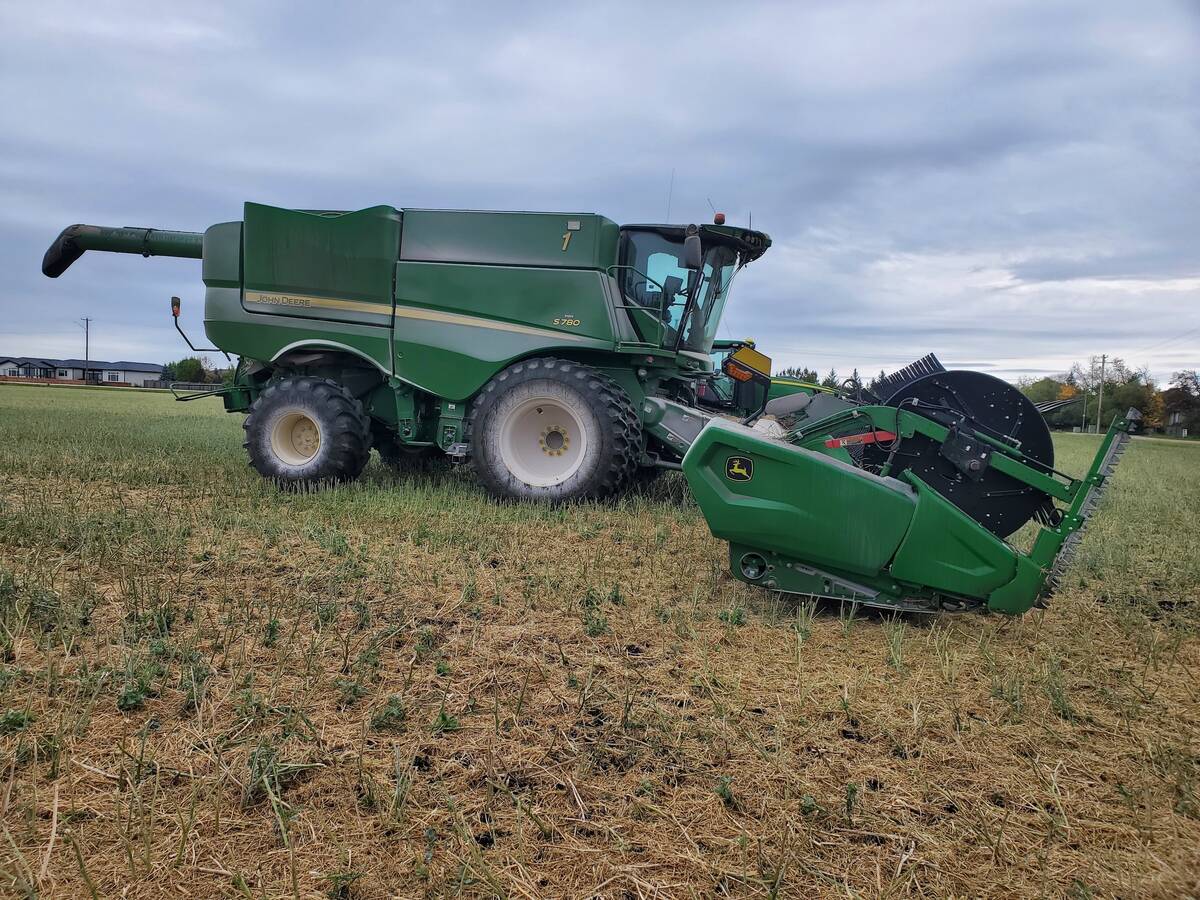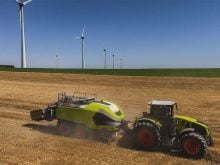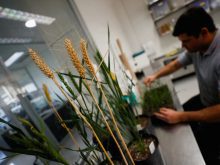During the Manitoba Grazing School earlier this month in Brandon, Wyett Swanson offered an overview of how he manages his ranch at Provost, Alta.
He keeps a close watch on costs, which he believes is essential for cow-calf producers.
Calving season at his ranch lands in May. That allows his cows to calve on stockpiled forage pastures and eliminates the labor and facilities needed for winter calving.
The cows are fed alfalfa, a high-quality forage, to supplement their diet.
When the calves are a month old, the cows and calves are vaccinated.
Read Also

Powdery mildew can be combine fire risk
Dust from powdery mildew can cause fires in combines.
At about that time, the nutrient requirements of the cows and calves begin to rise rapidly. The cows have to get in condition for recycling.
After the vaccinations, the cows and calves are released onto new-growth alfalfa pastures that are ready for summer grazing.
Swanson presented data from a 15-year study that showed alfalfa yielding more than twice the tonnage of grass from the same amount of land and rainfall. The data was gathered by the East Central Alberta Forage Association.
“By using alfalfa, we were able to get twice as much production on the same land base.”
Alfalfa allows Swanson an extra pound-per-day gain on his calves. It also helps his cows recoup the weight lost in winter and during spring calving.
Calves must be at least a month old before the cattle can go onto the alfalfa pastures. Swanson learned through experience that the calves cannot handle the volumes of milk produced by their mothers once the cows start grazing alfalfa.
The risk of bloat makes producers leery about grazing cattle on alfalfa, but Swanson said this can be prevented using controlled grazing systems.
The cattle are not placed on paddocks until after the alfalfa blooms. The plants have more fibre by then, which alleviates the threat of bloat, he said.
The cattle are moved to a new paddock once a week. Each paddock gets roughly six weeks of rest before being grazed a second time. By then, the alfalfa is again in bloom.
The risk of bloat rises later in the grazing season, after the first frost, especially among cows and calves over 300 pounds. To deal with that risk, Swanson uses a bloat control product called Bloat Care 4511. It is not registered in Canada, but Swanson uses it under an experimental prescription.
Bloat Care 4511 is administered through the waterer. It is 100 percent effective when the waterer is the only water source available, Swanson said.
He regards summer as the key time for his cows to put on condition for the winter. They each gain about 250 lb. during the season.
Bulls are placed with the cows in mid-July.
Swanson wants his calves to gain 400 lb. between May and mid-September to allow early fall weaning. The early weaning helps cows maintain the weight they gained during summer.
In mid-September, the calves go into Swanson’s feedlot and are placed on high-energy rations. They can be finished at a year of age, he said, which reduces the cost of gain.
The cows go onto fall pastures and remain there usually until the end of December. Swanson wants them to maintain their weight on the fall pastures and maybe even gain a few pounds in preparation for the hardest months of winter.
“Research shows it costs twice as much to winter a thin cow as a fat cow.”
Fall pastures typically include native pasture, stubble fields under-seeded with fall rye, regrowth on alfalfa hay fields, and fields rented from nearby grain farmers.
Swanson pays 40 cents per day for each cow pastured on the rented fields. He offers to put up the fencing on those fields provided he gets a five-year lease.
Neighboring grain farmers also provide chaff, one of his main winter feeds.
Swanson estimates chaff has a feed value 1.5 times greater than straw.
The neighbors benefit by having weed seeds removed from their fields along with grain seeds that might otherwise sprout the following year as volunteers. Chaff prices are equivalent to $5 per acre.
Swanson Ranches developed a winter feeding system where the cows are fed all their nutrient requirements on alternate days. During those days, the cattle feed on chaff supplemented with either alfalfa or canola-based silage.
Every second day, the cows eat from large portable bale feeders filled with straw.
He said the goal is to feed the cattle as cheaply as possibly without sacrificing their nutritional health.
His family designed portable windbreaks and feed bunks that are moved regularly during the winter so the manure is spread around the pastures. This eliminates the need for commercial fertilizer, and because the cattle are not overwintered in pens and shelters, there is no manure to remove in the spring.
Swanson said studies show beef cows produce about $150 worth of nutrients a year. Alfalfa, with its ability to fix nitrogen into the soil, has helped push his fertilizer costs even lower.
















